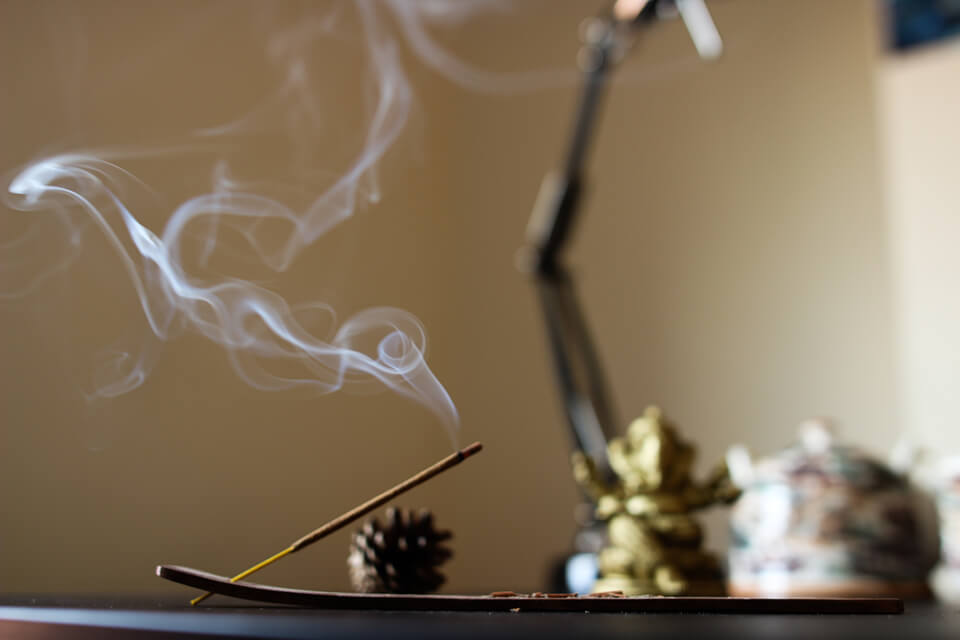Meditation takes focus and clarity, two states of mind, which are difficult to achieve if you are in a hectic or messy space. Many people choose to create a room specifically meant for meditation. Having your own space that is designated for meditation only can help you to focus and relax far more quickly. Here are some tips to help you make your very own meditation room.
10 tips and ideas for your meditation room
1. Choose a space that is just for meditation
No matter how big or small space is, you should choose one area of your home that is meant only for meditation. Don’t allow yourself to bring in any other parts of your life. For example, if you enjoy crafting, don’t start using that space as a convenient crafting area. You should be able to only associate that room with meditation. If you don’t have a lot of extra space in your house or apartment, consider putting up a curtain or sheet to create a divider. When stepping into this space, you should be able to slip more easily into the meditation mindset. Draw inspiration from meditation retreats. You don’t need a lot of space to meditate, just a dedicated space.
2. Pay attention to lighting

Lighting preferences can vary from person to person, so make sure you choose a type of lighting that is comfortable for you. Many people prefer plenty of natural light. If you have windows in your room, you could diffuse the light by placing sheer curtains over the windows.
Others may prefer a dim area lit only by candles or soft string lights. It’s usually best to avoid harsh or unnatural types of lighting, such as bright fluorescents. Whatever you like best, make sure to incorporate that kind of light into your meditation room. While this may seem like a small aspect at first, you’ll soon find that every little detail can make a huge difference.
3. Keep the space clean and uncluttered
Nothing can snap you out of your meditation mood faster than an untidy room. It’s impossible to focus on mindfulness when you’re stressing about the papers you left lying on the floor or the scattered clothes all over the place. A cluttered space is a distracting space, so you should create a meditation room that is easy to keep clean.
Avoid putting too many things in the space, as well. You might be tempted to put all sorts of pretty crystals, plants, and decorations all over the place. That’s fine when done in moderation. However, a space that is too cluttered leaves plenty of room for your mind to wander. Try to keep your room as minimalist as possible to lessen the chance of getting distracted. Keeping your home and meditation room clean is also a simple way to feel better about yourself.
4. Keep the air fresh and fragrant

A nearby window or some sort of airflow is crucial to keeping your meditation room smelling and feeling fresh. Stale air can make the room feel crowded, and it will probably make it difficult for you to focus on your breath. Fresh air keeps your mind clear and relaxed, and a well-ventilated area will promote a calming meditation experience. If you aren’t fortunate enough to have a window in your room, you might want to invest in a quiet fan to keep the air light and fresh. You might also want to consider using some aromatherapy, such as candles, incense, or essential oils, to bring a lovely smell to your meditation room. Not only can meditation reduce stress, but a well ventilated and clean air room can bring a serene vibe as well.
5. Remind yourself of nature
While we did discuss avoiding using too much clutter earlier, it’s not a bad idea to have a few plants in your space. Plants will help to remind you of nature and will cause you to feel grounded. Some plants are also natural air-purifiers, which can help keep the air clean, fresh, and clear of toxins.
If you do choose to keep plants in your meditation room, it’s best to choose plants that you know are easy to care for. Succulents and cacti, such as jade, living stones, and echeveria, are all easy to care for if given direct sunlight, large and shallow pots with drainage holes, and the occasional watering. If you’ve had bad luck with plants in the past, it might be best to learn how to grow plants in a separate space before introducing them to your meditation room. You don’t want your room to have anything that will cause you stress.
If you don’t have much of a green thumb, or if your chosen space doesn’t have adequate sunlight, you might want to instead decorate with natural hues like green and brown instead, just to bring a sense of nature to the place.
6. Decoration

In general, it’s best not to introduce too much clutter into your meditation room. However, a few decor elements can help bring your space to life and can significantly help you to achieve the proper headspace for meditation. If you use meditation alongside practicing a religion, consider bringing in statues or religious imagery. Some other things to include might be prayer beads, worry stones, and singing bowls. Healing crystals such as amethyst and quartz can make the space feel more personal and help calm your mind.
In general, avoid too much decor, as it can cause the space to feel cluttered and distracting. When used correctly, however, a few decorative elements can bring your meditation room to the next level.
7. Color
Color is an essential aspect of creating a meditation room. We all associate different colors with specific moods, thoughts, and feelings. Some of us have unique connections to particular colors, and some people even have specific colors that they hate. You should choose color palettes that help you to feel grounded and calm. There are no hard and fast rules for selecting a color palette for your room, as it will vary significantly from person to person. However, we do have a few ideas for inspiration.
If nature is especially important to you, you may want to consider incorporating natural and earthy tones into your meditation room. Greens and browns can help you to feel like you are deep in a forest, which can bring a lot of people a great sense of calm.
If your chosen space is tiny, you’ll probably choose lighter colors, such as whites or pastels, to make the space feel larger. On the other hand, darker color palettes can elicit feelings of being in the womb, or deep in the ocean, which can also be ideal for some people.
Overall, the colors of your meditation space should create whatever mood you want to feel during meditation. Choose a serene color palette that makes you feel at home, and helps get you into the right headspace.
8. Noise

Noise level is another crucial aspect to consider when creating your meditation space. You should choose a room that doesn’t get a lot of traffic nearby, both outside of your house and inside. Lots of noise will distract you from your meditation and make it hard to focus on mindfulness and breath.
If you live in an area where you simply can’t control the amount of noise you hear, such as in a big city, you might want to consider playing meditation music or white noise. There are plenty of apps you can get, which play sounds such as rainstorms, waterfalls, forests, birdsong, and many other soothing sounds.
9. Keep it technology-free
This part is vital! Your meditation space should be a room that is kept entirely technology free, no matter the circumstance. This means absolutely no phones, computers, televisions, or any other technology, except maybe a speaker or radio for playing meditation music. Meditation is a way to focus the mind and detach yourself from the hectic aspects of everyday life. There’s no way you can get into the right headspace if you are being constantly distracted by text messages, emails, or any other sort of notification from your phone. While there’s nothing wrong with enjoying a bit of time scrolling through social media now and again, your meditation room simply is not the space for technology. Make it a strict rule not to bring your phone into your meditation space, and you will thank yourself for it later!
If you need your device to keep track of how long you should meditate for, make that the exception but use Airplane Mode to keep you away from the distractions of the internet.
10. Make it special

Finally, you should make your meditation room a space that is special to you. When you enter your room, it should evoke feelings of peace and calm. Ultimately, your chosen area should be a space that you actively enjoy being in. After all, what’s the point of creating a meditation room if you don’t even like being there? Incorporating colors, decor, and lighting elements that are all personal to you will help your room feel intimate and sacred. It should be a room that feels specially dedicated to feelings of peace and calmness, a dedicated space for personal alone time. You should be able to come to your meditation room whenever you need to feel at peace.




